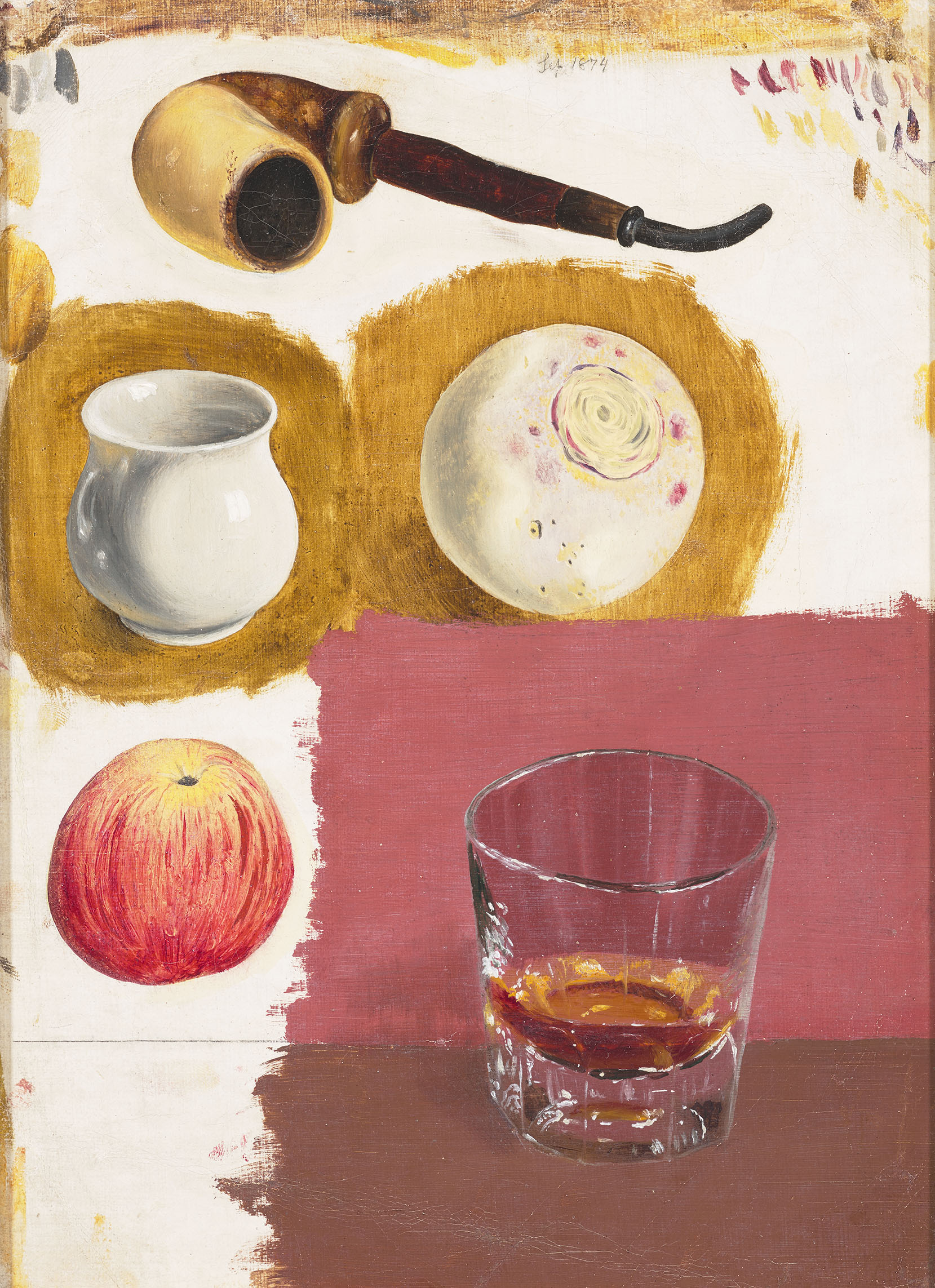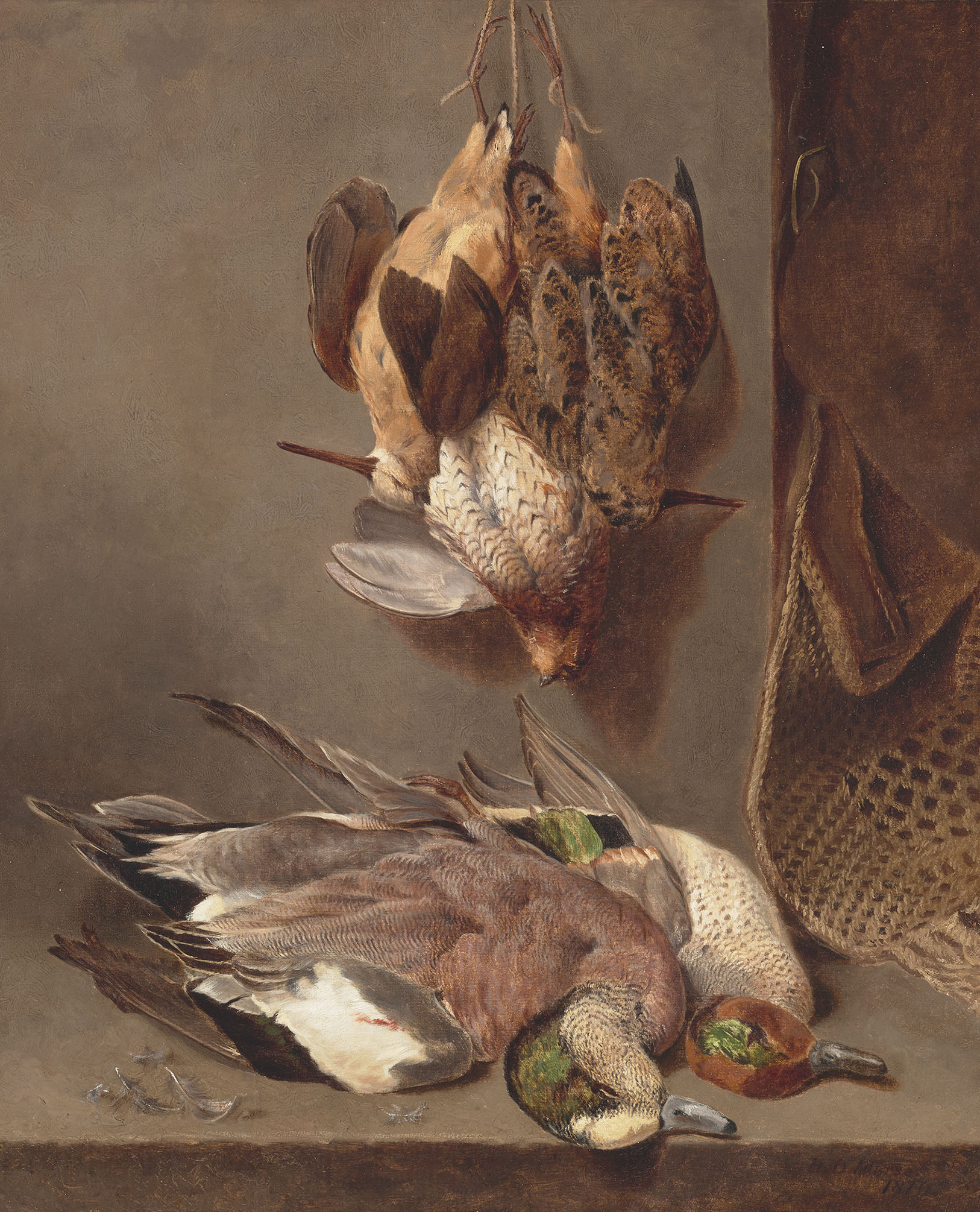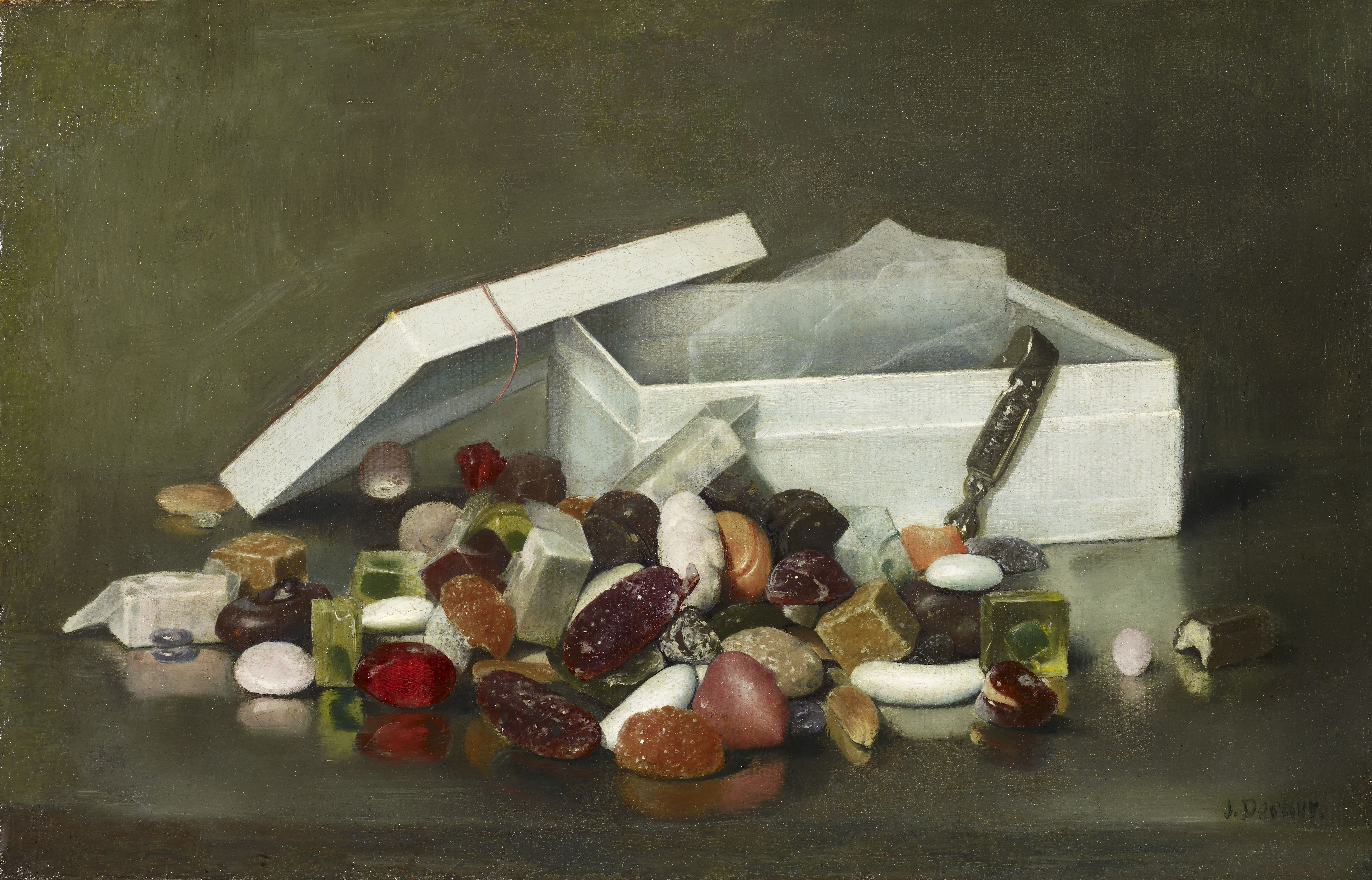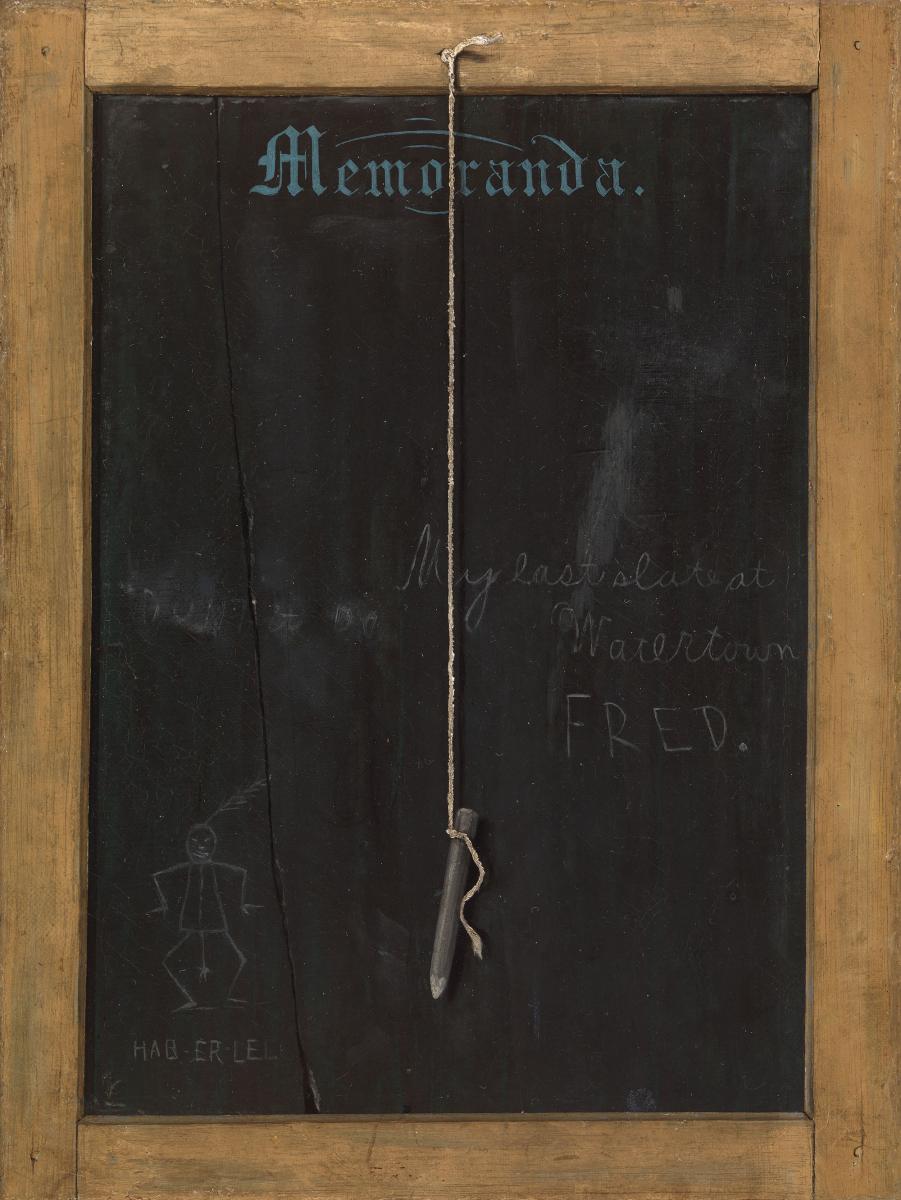Study of a Pipe and Other Objects

What does this painting reveal about the artist’s process?
This striking oil study is a deviation from the more polished still-life tradition, and one of hundreds made by 19th-century painters. This work allows us to better understand the artist’s techniques and compositional strategies by observing his thought process as he worked through the problems of individual objects. Each element has a slightly flat quality that allows it to occupy its own iconic space, which may unintentionally make Harnett’s study look rather modern to contemporary eyes.



